I am using Entity Framework to map two tables together using Entity Splitting as outlined here and here.
I have found that if I execute a .ToList() on an IQueryable<SplitEntity> then the results are from an Inner Join. However, If I take that same IQueryable and execute a .Count() it will return the number of records returned by a Full Join.
Here is a unit test that fails:
[TestMethod]
public void GetCustomerListTest()
{
// arrange
List<Customer> results;
int count;
// act
using (var context = new DataContext())
{
results = context.Customers.ToList();
count = context.Customers.Count();
}
// assert
Assert.IsNotNull(results); // succeeds
Assert.IsTrue(results.Count > 0); // succeeds. Has correct records from inner join
Assert.AreEqual(count, results.Count); // This line fails. Has incorrect count from full join.
}
This strikes me as very bad. How can I get the .Count() method to return the results from an Inner Join like the .ToList()?
Update - SQL
I was wrong about the full vs inner joins.
The .ToList() results in:
SELECT
[Extent1].[CustomerNumber] AS [CustomerNumber],
-- ...etc...
[Extent2].[CustomerName] AS [CustomerName],
-- ... etc...
FROM [dbo].[CustomerTable1] AS [Extent1]
INNER JOIN [dbo].[CustomerTable2] AS [Extent2] ON [Extent1].[CustomerNumber] = [Extent2].[CustomerNumber]
The .Count() results in:
SELECT
[GroupBy1].[A1] AS [C1]
FROM ( SELECT
COUNT(1) AS [A1]
FROM [dbo].[customerTable2] AS [Extent1]
) AS [GroupBy1]
Update - DataContext and entity code
The DataContext:
public class DataContext : DbContext
{
public DataContext() { Database.SetInitializer<DataContext>(null); }
public DbSet<Customer> Customers { get; set; }
protected override void OnModelCreating(DbModelBuilder modelBuilder)
{
base.OnModelCreating(modelBuilder);
modelBuilder.Configurations.Add(new CustomerMapping());
}
}
}
The Customer Mapping (FluentAPI):
public class CustomerMapping : EntityTypeConfiguration<Customer>
{
public CustomerMapping()
{
this.Map( m => {
m.Properties( x => new { x.CustomerNumber, /*...etc...*/});
m.ToTable("CustomerTable1");
})
.Map( m => {
m.Properties( x => new { x.CustomerName, /*...etc...*/});
m.ToTable("CustomerTable2");
});
}
}
The Customer entity:
public class Customer
{
[Key]
public string CustomerNumber { get; set; }
public string CustomerName { get; set; }
}
